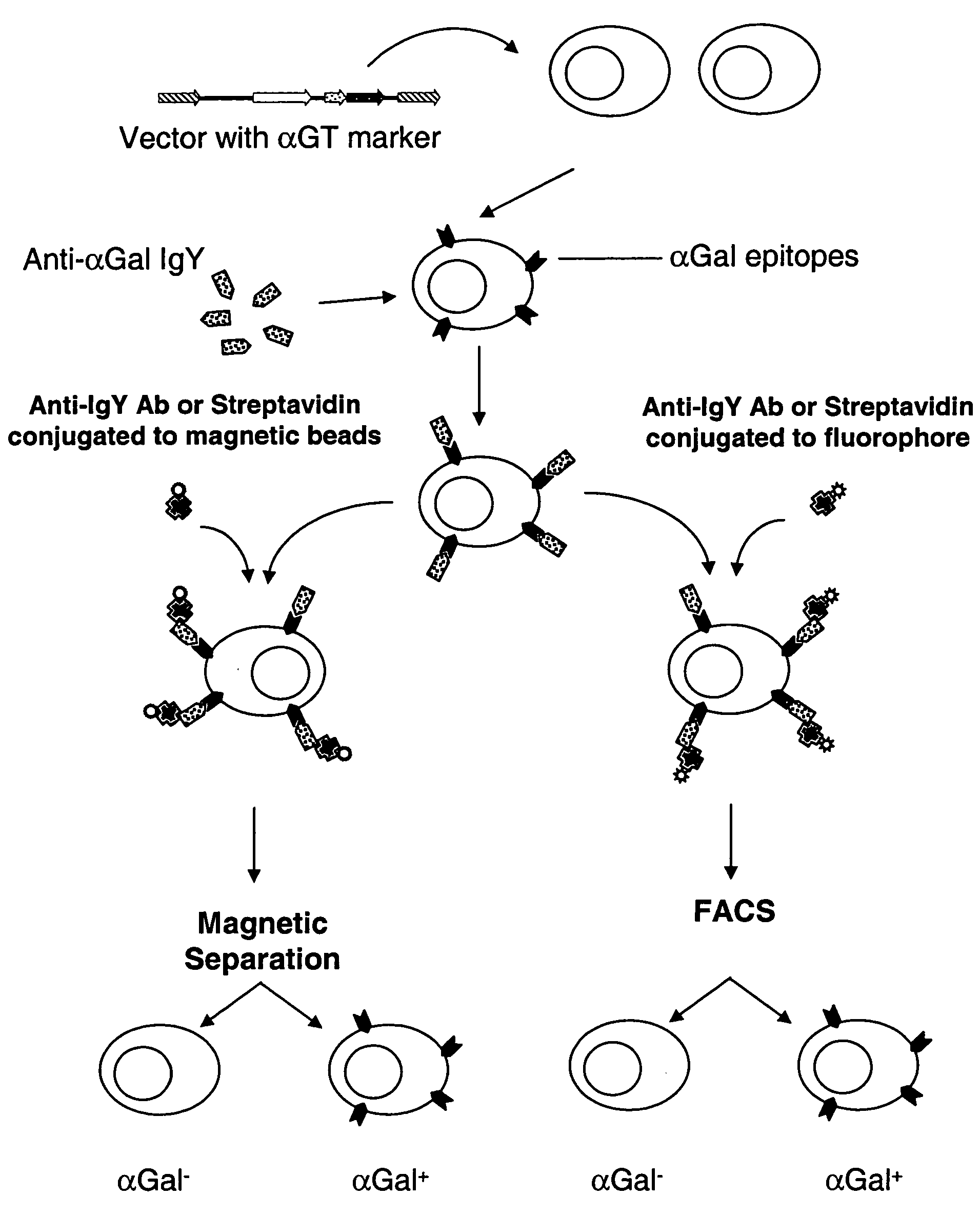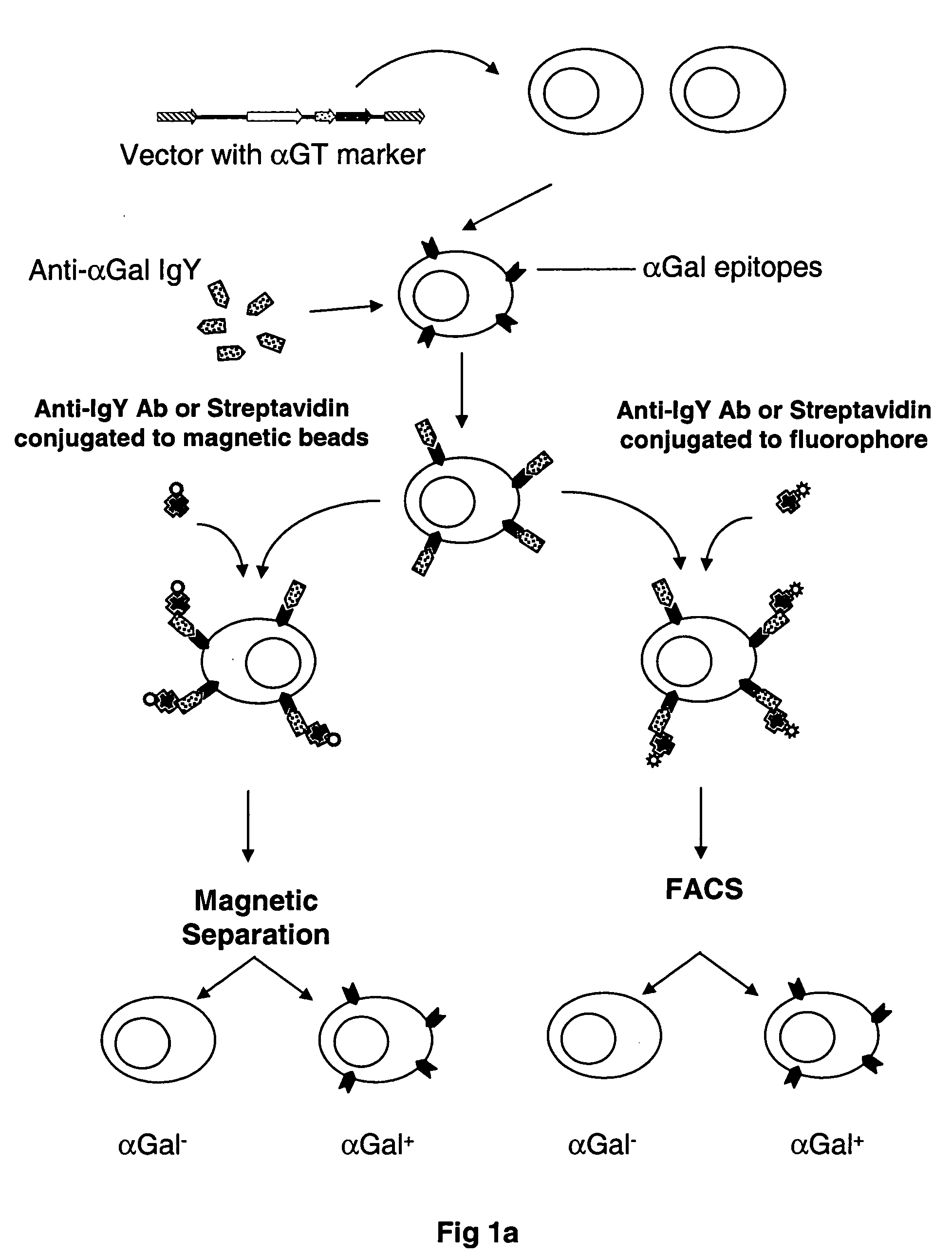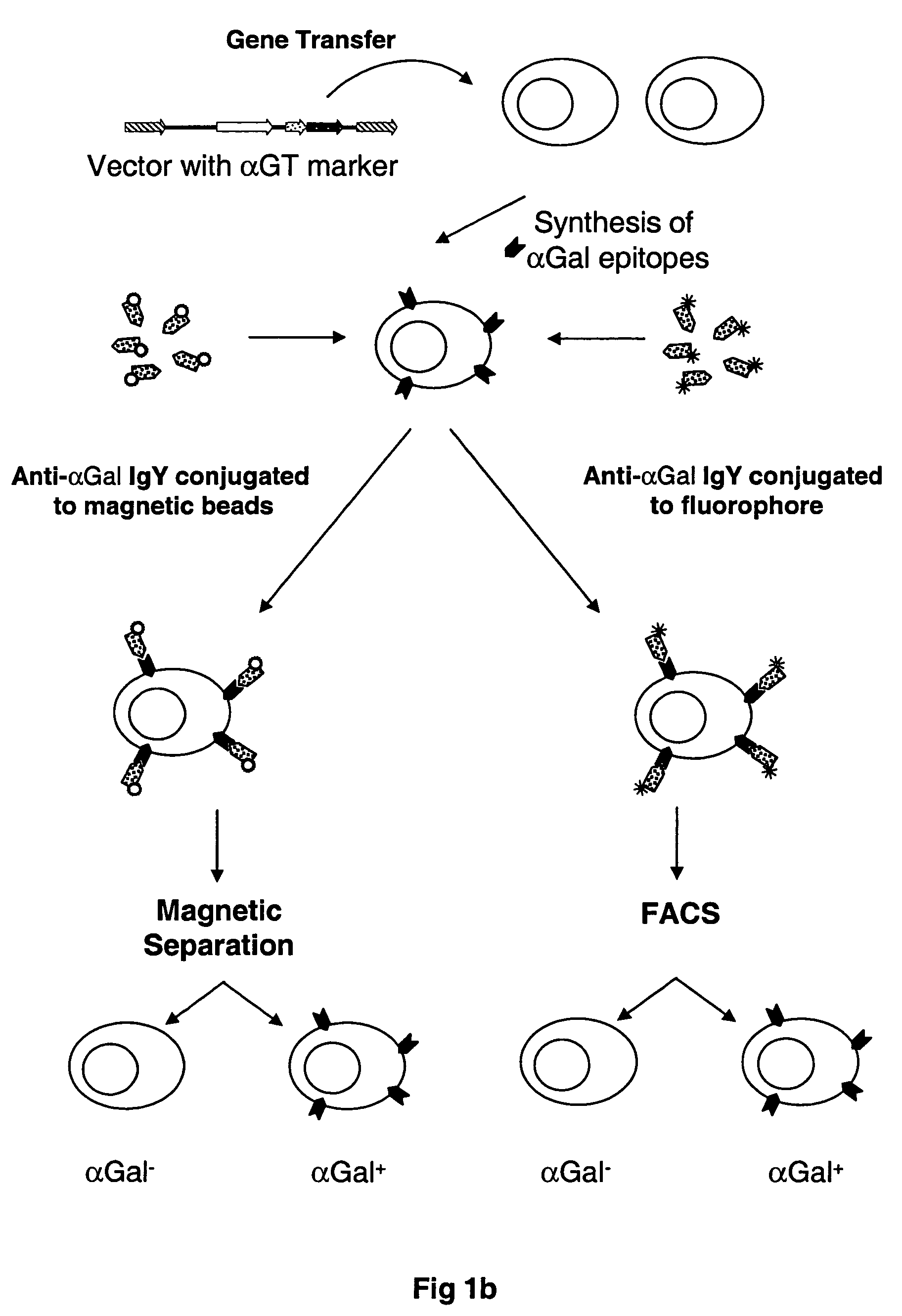Selectable gene marker system based on expression of N-acetyllactosaminide 3-alpha galactosyltransferase
a technology of nacetyllactosaminide and gene marker system, applied in the field of gene transfer, immunology, cellular and molecular biology, can solve the problems of cell survival in toxic environment, high endogenous rate, and time-consuming methods, and achieve the effect of rapid selection
- Summary
- Abstract
- Description
- Claims
- Application Information
AI Technical Summary
Benefits of technology
Problems solved by technology
Method used
Image
Examples
example 1
Production of Retroviral Vector Expressing □GT, pLNCKG
[0091] In one embodiment of the present invention, the method for the rapid isolation of cells via the labeling of these cells with the αGal epitope was investigated by placing the αGT cDNA in a mammalian expression vector derived from DNA sequences of murine retroviruses, called pLNCKG. To construct this vector, A 1,077 bp fragment of murine αGT gene was PCR amplified by a forward primer, 5′-ACAAAAGCTTGA CATGGATGTCAAGGGAAAAGTAAT-3′, which contains a Kozak sequence to enhance the translation of αGT, and a reverse primer, 5′-AATTATCGA TTCAGACATTATTTCTAAC-3′, and then cloned into the ClaI and HindIII sites of pLNCX to produce pLNCKG retroviral vector (FIG. 4). This vector was transfected into the packaging cell line 293.AMIZ to generate the vector producer cell line 293.AMIZ / LNCKG [“Chimeric retroviral helper virus and picornavirus IRES sequence to eliminate DNA methylation for improved retroviral packaging cells”, Young and Link,...
example 2
Transduction of A375 cells with Vectors Encoding αGT.
[0092] To generate αGal(+)-A375 cells, 2×106 A375 cells were transduced with 2 mL of supernatant containing the LNCKG retrovirus with an infectious titer of 2×106 tu / mL. Cells were selected for resistance to Neomycin by a two-week selection in medium supplemented with G418 1 mg / mL. After this period of selection, cells were stained for expression of the □Gal epitope with a chicken anti-αGal polyclonal antibody and sorted by fluorescence activated cell sorting. These A375-αGT+ cells were used below in mixes of A375-αGT+ and A375 cells performed at different ratios to test and optimize the procedure of separation of αGT positive from αGT negative cells. Also, A375-LNCKG clone was used as a standard to test different batches of affinity purified anti-αGal IgY.
example 3
Purification of Anti-αGal Polyclonal Chicken Antibody
[0093] The isolation of cells expressing αGT by the present invention requires the use of the antibody composition mentioned above. The antibody composition comprises a population of the affinity purified IgY molecules that specifically and accurately recognize the αGal cell surface epitopes. The antibody composition was created by the immunization of a White Leghorn chicken with an antigen comprised of αGal epitopes conjugated to BSA. The immunization scheme was 4 injections of the αGal-BSA over a period of 4 weeks followed by a booster injection once every 4-6 weeks. Total IgY was purified from the chicken egg in groups of 6 eggs per purification. The purification of the total IgY can be completed according to several techniques known to those skilled in the art. One such method of purification involves the extraction of IgY from the egg yolk using deionized water followed by diluting the egg yolk 1:10 in cold 3 mM HCl so that ...
PUM
| Property | Measurement | Unit |
|---|---|---|
| pH | aaaaa | aaaaa |
| pH | aaaaa | aaaaa |
| temperature | aaaaa | aaaaa |
Abstract
Description
Claims
Application Information
 Login to View More
Login to View More - R&D
- Intellectual Property
- Life Sciences
- Materials
- Tech Scout
- Unparalleled Data Quality
- Higher Quality Content
- 60% Fewer Hallucinations
Browse by: Latest US Patents, China's latest patents, Technical Efficacy Thesaurus, Application Domain, Technology Topic, Popular Technical Reports.
© 2025 PatSnap. All rights reserved.Legal|Privacy policy|Modern Slavery Act Transparency Statement|Sitemap|About US| Contact US: help@patsnap.com



